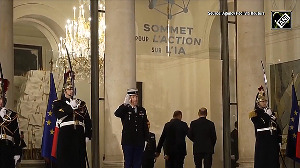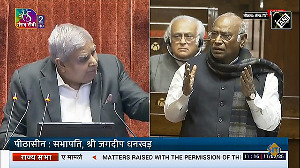The conference room has a busy, workman's look about it, with a long table in the centre. Around, on the two of the walls hang shirts with premium labels; Abercrombie & Fitch, Nordstrom, Tommy Hilfiger & Hugo Boss. Through the large, sealed window, is the familiar Shanghai sprawl of skyscrapers stretching across. It's raining outside.
We are in the China sales offices of the $500 million Esquel, a Hong Kong headquartered shirt maker, among the world's largest. Rebecca, a young merchandiser of Taiwanese origin, is taking my friend Vijay through a corporate presentation. She mentions, by the way, that her founder, Marjorie Yang was voted one of the most powerful women business leaders in the world by Fortune. Yang is also MIT and Harvard educated.
The next slide is on Esquel's production (60 million shirts) facilities. I notice their largest manufacturing plant is in Gaoming, near Guangzhou on the east coast. The plant employs some 21,000 workers. The rest are in Malaysia, Vietnam, Mauritus and even Sri Lanka. "I can understand they are big in China but how come they are not in India?" I ask Vijay who wants to import Esquel's yarn-dyed (a speciality) fabric for Indian garment makers.
The next day we visit Syed, a GAP Inc "converter' or fabric sourcer, in another Shanghai office block. Right next to one of the city's six elevated roads. Translated, it's a 14 km, six-lane flyover that runs above the city. Syed hails, interestingly, from one-time textile city Davangere in Karnataka. Trained as an engineer, he went to Dubai 14 years ago but wandered into textiles and fabrics.
Syed says only 20 per cent of his fabric consignments head for India. The rest go all over the region, including Bangladesh and Sri Lanka. "Why is India not a bigger buyer, particularly in this post quota world?" I ask him. Syed takes a pen and paper. "We work mostly with the big brands. Their lead times are small and orders big. And a garment manufacturer in India will find it tough. Assuming he has the capacity," he says.
Why is that? I ask. "Compounded delays," says Syed. A consignment of fabric can take upto 25 days to reach the manufacturer in India, particularly in Mumbai or Delhi, compared to 15 in Sri Lanka. Customs clearance can be tricky. It might be three days in Chennai but upwards of 10 days in Mumbai. Depending on whether you have a full container or not. And then comes the long march; negotiating inter state barriers, octroi check points and bad roads.
Moreover, Syed says the containers don't come straight to India. Mostly they are trans-shipped (transferred from one vessel to another) in Singapore or Colombo. Like I was on my Singapore Airlines flight back to Mumbai. "But why Colombo?" I ask. "Well, they have a bigger and more efficient port, he explains. Anyway, that's another two-three days lost. And additional costs. And it's the same story on the outbound, though time at customs is less.
So that's one reason companies like Esquel are in Colombo and not in India. And Syed is exporting there. Customs clearance is brisk both ways, the garment factories are close by and labour, like the rest of the region, is cheap. Not to mention flexible. "But we are managing, aren't we?" I ask Syed, thinking of all the IPO-fuelled expansion plans of the Indian garment makers.
"Of course," he replies. But then it is about the opportunity lost. China exports almost ten times as much garment, as India. But lost opportunity is only part of the problem. Says Syed, "You have to remember the supply chain is always getting shorter and tighter." Deliveries are usually expected with 120 to 150 days of placing an order. Sometimes less. Depending upon the kind of fabric and whether its in stock. And the order size.
Syed says that increasingly, big brands in the US and Europe are creating 'fast track' segments. Like demanding that 15 per cent of the total order must be delivered within 60 days.
"That's not possible for an Indian garment maker to match, even with locally sourced fabric." Though a garment maker based out of Sri Lanka could potentially deliver, he says.
As we leave Syed's office and proceed for an Indian lunch, I collect my thoughts. An Indian garment exporter will almost always be at a 15 to 21-day logistics disadvantage. Come to think of it, it's the same reason Intel has to think so much before investing in an Indian chip fab. Its one thing to invest for local growth. Another to create a cog in a smoothly turning global supply chain wheel.
A multi-location garment maker, like Esquel, will hesitate to put India on its global manufacturing map. Not surprisingly, there is little or no foreign direct investment in this sector. And thus more jobs.
As long as it takes weeks to clear customs and days to transport the product from the ports to the factories. So, the bad news is that customs and procedures are one of the key causes for the delays.
That's the good news as well. Revamping should be simpler than building infrastructure.







 © 2025
© 2025